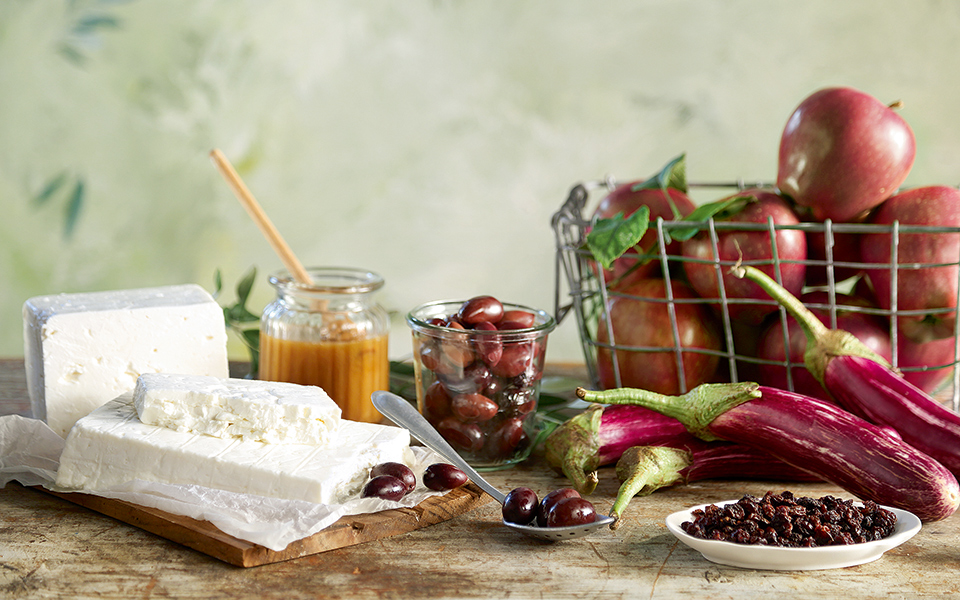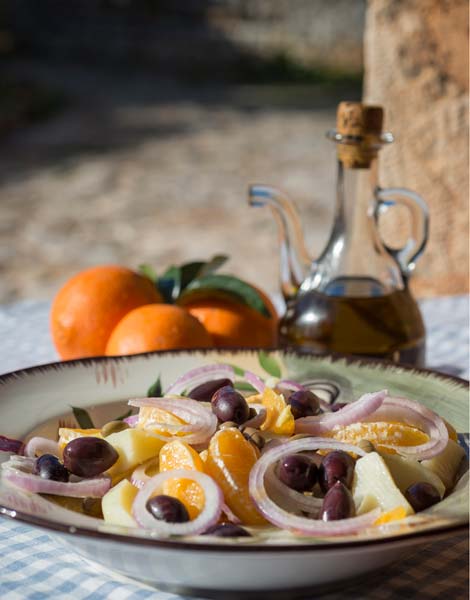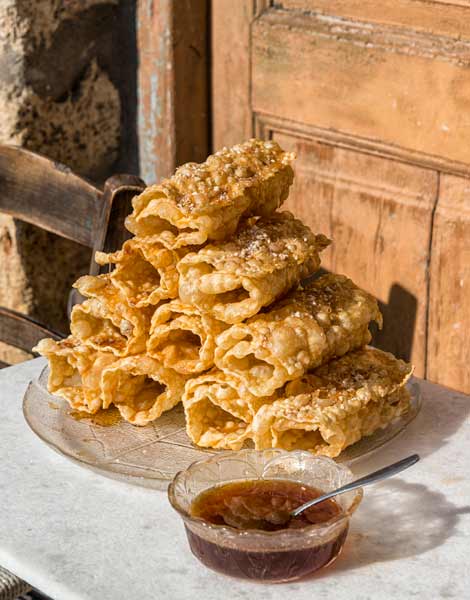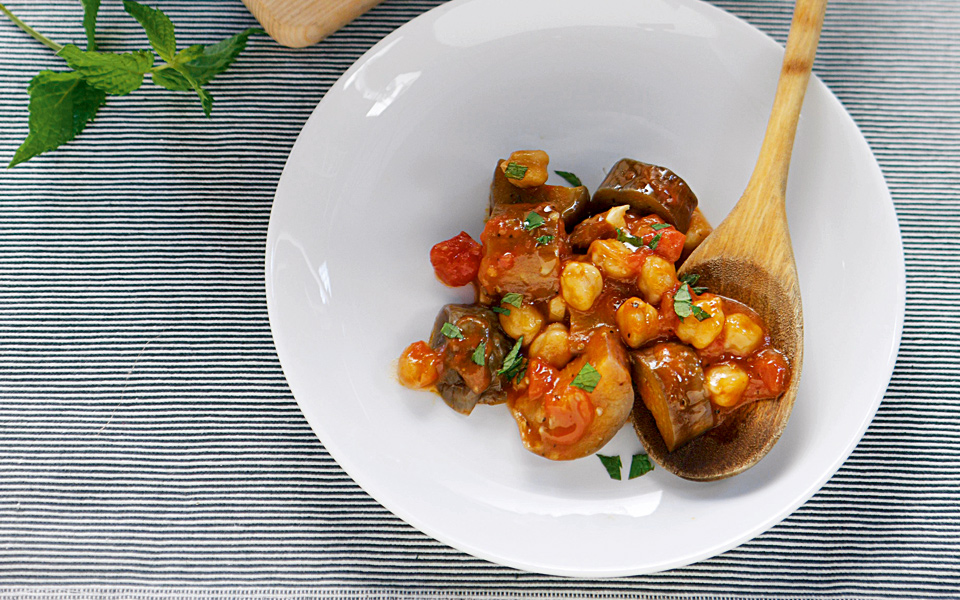Athens’ Most Coveted Culinary Hotspots
Athens sizzles with culinary creativity, blending...

Peloponnesian traditional products
© George Drakopoulos / Food Styling: Tina Webb
With the Aegean Sea to the east and the Ionian to the west, the Peloponnese is renowned for fresh fish and seafood, with home cooks and taverna owners em- bracing everything the sea has to offer. From the elite of the marine world to the small and unbecoming, everything is treated with due respect. While the former may be grilled and served with a simple dressing of olive oil and lemon, the latter will most likely be fried in sizzling oil. Even the bottom-feeders and riff-raff are used in the legendary kaka- via soup, which many claim hails from Mani or the nearby island of Kythera. According to one anecdote, a 19th century British traveler in Gytheio expressed his astonishment when hearing from a local fisherman that the fish is boiled in oil without any water. The fisherman simply remarked: “Why are you surprised? We have so much oil here we practically wash our hands in it!”
Though probably poking fun at his foreign guest, the fisherman was not entirely wrong, as the Peloponnese produces the bulk of the country’s olive oil and has nine varieties with Protected Designation of Origin (PDO). Olive oil is the star in myriad salads, vegetable casseroles, meat dishes and even desserts. It is used to fry the crunchy, honey-soaked diples and lalaggia (much like Spanish churros), and in the dough for sugar-coated Christmas kourabies cookies. Starring alongside the oil, olives are usually of the Kalamata variety picked from Koroneiki trees.
Another product that is intrinsically linked to Peloponnesian cuisine is feta cheese and here they usually like it hard and tangy. Every region, every city and village, makes its own feta and believes it to be the best. From the mountains of Kalavryta to the plains of Argos and Tripoli, the taste of the feta changes according to the terroir that flavors the milk used in its production.
Beyond these culinary staples, each part of the Peloponnese has its own gastronomic profile, shaped by local products and tradition. Laconia and Argolida, for example, produce a lot of citrus. Mani, on the other hand, is famous for its cured hams, born from the need to preserve the meat in the time before refrigeration and still made in the traditional manner with orange rind for added flavor. One dish that probably best exemplifies local gastronomy is the orange salad made in Mani, a marriage of citrus, onions or leeks, olives and olive oil, eaten before the salad proper or prepared as a light meal with the addition of boiled potatoes. In Laconia, pride of place belong to its honey, scented with the wild herbs of the Taygetus and Parnon mountain ranges, as well as PDO sfela, or “fire cheese” as some like to call this bold, salty and slightly bitter cheese made with goat’s milk.
“ Local gastronomy is exemplified by the orange salad made in Mani, a marriage of citrus, onions or leeks, olives and olive oil, eaten before the salad proper or prepared as a light meal with the addition of boiled potatoes. ”

Potato salad with orange
© Perikles Merakos

Tranditional "diples"
© Perikles Merakos
“ If you want to taste all of the Peloponnese in one bite, get a thick slice of country bread, grate a juicy tomato on top, add plenty of crumbled feta, a sprinkling of oregano and a dash of olive oil. ”
Other delicacies that can be found in different parts of the Peloponnese include goglies, handmade pasta much like gnocchi, which is served with hot butter and grated, tangy myzithra cheese; tsaitia, small pies stuffed with wild greens; giant white beans (gigantes) fried up with cured syglino pork; kagianas, or eggs scrambled with tomato sauce; hiouropaspalas, pork fried in a flour paste, and, of course, free-range cockerel in tomato sauce served with pasta. In Vordonas, a small village at the foot of Taygetus, they add a few chunks of sfela right before serving.
Argos is one of the biggest farm- ing communities in the Peloponnese and supplies Greece with a vast variety of fruits and vegetables, the most renowned of which are Iria artichokes and fragrant Argos melons. It is also famous for its grains, used to produce the excellent bread and dried rusks that can be found in bakeries from Epidaurus to Tracheia.
Ilia also boasts fine fruits and vegetables, such as Amaliada watermelons and Manolada strawberries. Classic dishes here include artichokes cooked with rice and served with egg-lemon sauce, beans stewed with wild greens, wild greens and trahana (fermented grain cooked in milk), and rabbit served with garlic paste (skordalia).
Yet the product that helped build the Peloponnese’s cities and farms is the Corinthian currant, which was recently awarded Protected Geographical Indication (PGI) status. Boatloads of the dried fruit would leave Peloponnesian ports in the 19th century destined for Britain and return with cash and salted cod – which also explains why there are so many dishes with salted fish.
Another specialty, found mainly in the west, is roasted sow, made with crackling skin and the meat falling off the bone in almost every taverna from Pyrgos to Kalamata. Sow and pork in general is also the meat of the Arcadians, who produce delicious potatoes in Tegea, the renowned Delicious Pilafa apples in Tripoli and sweet eggplants in Tsakonia, which are cooked in myriad ways, including as a sweet.

Tsakoniki eggplant and chickpea casserole in tomato sauce
© George Drakopoulos / Food Styling: Tina Webb
The center of the region is dominated by Mt Mainalo, a rich source of chestnuts, cherries, sour cherries and the country’s only PDO-protected honey, made in Elati. Eggs scrambled with cured pork, pork cooked with tomato sauce and walnut paste or with apples and chestnuts, as well as different game stews complement the profile of the region’s hearty cuisine.
On the coast of Achaia, the real stars are freshly caught fish, traditionally cooked whole, filleted along the backbone, or in a thick soup known as bourgeto. In the mountains, in Kalavryta for example, the cuisine is more bucolic and features a lot of meat (mainly lamb), cheeses and handmade pasta. Trout and salmon can also be found in some villages with access to rivers.
While Corinth’s raisins may be the region’s most famous product, the area of Feneos also boasts excellent grains and pulses, including small fava beans that are so tender they don’t need to be soaked before cooking. Locals use them to make a soup with pork and wild greens.
The cuisine of Messinia probably best encompasses all the flavors and products of the Peloponnese, as it includes fish, cured pork, oranges, figs and raisins, among many, many other wonderful things. Raisins, for example, are used to make excellent balsamic vinegar, now available on the market under the Papadimitriou brand. As for fresh produce, the tomato is a firm favorite and best showcased in fresh salads, as well as in the signature cockerel stew. But if you want to taste all of the Peloponnese in one bite, get a thick slice of country bread, grate a juicy tomato on top, add plenty of crumbled feta, a sprinkling of oregano and a dash of olive oil. Simply unbeatable!
“ The cuisine of Messinia probably best encompasses all the flavors and products of the Peloponnese, as it includes fish, cured pork, oranges, figs and raisins, among many, many other wonderful things. ”
Athens sizzles with culinary creativity, blending...
Explore the tavernas of Nikaia, Moschato,...
Mimosa shrubs and sweet acacia and...
Explore the story and flavor of...